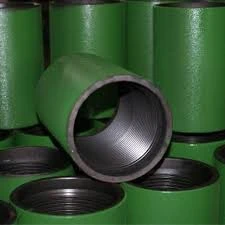- Afrikaans
- Albanian
- Amharic
- Arabic
- Armenian
- Azerbaijani
- Basque
- Belarusian
- Bengali
- Bosnian
- Bulgarian
- Catalan
- Cebuano
- Corsican
- Croatian
- Czech
- Danish
- Dutch
- English
- Esperanto
- Estonian
- Finnish
- French
- Frisian
- Galician
- Georgian
- German
- Greek
- Gujarati
- Haitian Creole
- hausa
- hawaiian
- Hebrew
- Hindi
- Miao
- Hungarian
- Icelandic
- igbo
- Indonesian
- irish
- Italian
- Japanese
- Javanese
- Kannada
- kazakh
- Khmer
- Rwandese
- Korean
- Kurdish
- Kyrgyz
- Lao
- Latin
- Latvian
- Lithuanian
- Luxembourgish
- Macedonian
- Malgashi
- Malay
- Malayalam
- Maltese
- Maori
- Marathi
- Mongolian
- Myanmar
- Nepali
- Norwegian
- Norwegian
- Occitan
- Pashto
- Persian
- Polish
- Portuguese
- Punjabi
- Romanian
- Russian
- Samoan
- Scottish Gaelic
- Serbian
- Sesotho
- Shona
- Sindhi
- Sinhala
- Slovak
- Slovenian
- Somali
- Spanish
- Sundanese
- Swahili
- Swedish
- Tagalog
- Tajik
- Tamil
- Tatar
- Telugu
- Thai
- Turkish
- Turkmen
- Ukrainian
- Urdu
- Uighur
- Uzbek
- Vietnamese
- Welsh
- Bantu
- Yiddish
- Yoruba
- Zulu
Understanding the Distinctions Between Casing and Tubing in Oil and Gas Operations
The Difference Between Casing and Tubing
In the oil and gas industry, the terms casing and tubing refer to two distinct components that play critical roles in the production process. While both are essential parts of drilling and production operations, they serve different purposes, have different specifications, and are installed at various phases of the well construction process.
Definition and Purpose
Casing is a series of pipes that are installed in the wellbore after it is drilled. Its primary purpose is to provide structural integrity to the well, prevent the collapse of the borehole, and isolate different geological formations to prevent fluids from flowing uncontrollably. Casing helps to define the zones within the well that may produce oil or gas while simultaneously protecting the environment from unwanted contamination. It is also crucial in allowing the safe and efficient extraction of hydrocarbons, as it provides a pathway for the fluids to flow up to the surface.
On the other hand, tubing is a smaller diameter pipe that is inserted inside the casing once the well has been completed. Its primary role is to facilitate the actual production of oil and gas from the reservoir. Tubing is designed to handle the pressures and conditions within the wellbore during production, ensuring that hydrocarbons can flow up to the surface without obstruction.
Types and Specifications
Casing comes in various types, including surface casing, intermediate casing, and production casing. Surface casing is typically the first casing installed to protect the upper portion of the well and groundwater sources. Intermediate casing provides additional support and safety for deeper sections of the well. Production casing is used to directly contact the reservoir and allow for the extraction of hydrocarbons.
what is the difference between casing and tubing?

In terms of specifications, casing pipes are generally thicker and designed to withstand higher pressures and forces because they need to bear the load of the surrounding earth and prevent blowouts or uncontrolled leaks. Casing materials often include carbon steel, which is treated to withstand corrosion and external pressures.
Conversely, tubing is lighter and thinner than casing. It is selected based on the design of the completion and the expected production conditions. Tubing is often manufactured with specific materials that can resist the corrosive nature of produced fluids, including stainless steel and high-alloy steels. The inner diameter of tubing is smaller than that of casing, making it capable of handling the flow of oil and gas while minimizing the risk of blockage.
Installation Process
The installation process of casing and tubing also differs significantly. After the well is drilled to the desired depth, casing is inserted and cemented into place to secure it against the surrounding geological formations. Once the casing is set and evaluated for integrity, the drilling process may continue if additional casing sections are required.
After completing the drilling and casing operations, tubing is installed through the casing to allow for the extraction of hydrocarbons. This process, known as ‘completion’, often involves setting up production equipment and ensuring that the tubing can efficiently transport the produced fluids to the surface.
Conclusion
In summary, casing and tubing are two vital components in oil and gas wells, each serving distinct yet complementary functions. Casing provides structural integrity and environmental protection, while tubing facilitates the actual production of hydrocarbons. Understanding the differences between these two elements is crucial for anyone involved in the drilling and production process as they contribute significantly to the efficiency and safety of operations in the oil and gas sector. The successful integration of both components is essential for maximizing production rates while minimizing operational risks.
-
Tubing Pup Joints: Essential Components for Oil and Gas OperationsNewsJul.10,2025
-
Pup Joints: Essential Components for Reliable Drilling OperationsNewsJul.10,2025
-
Pipe Couplings: Connecting Your World EfficientlyNewsJul.10,2025
-
Mastering Oilfield Operations with Quality Tubing and CasingNewsJul.10,2025
-
High-Quality Casing Couplings for Every NeedNewsJul.10,2025
-
Boost Your Drilling Efficiency with Premium Crossover Tools & Seating NipplesNewsJul.10,2025







